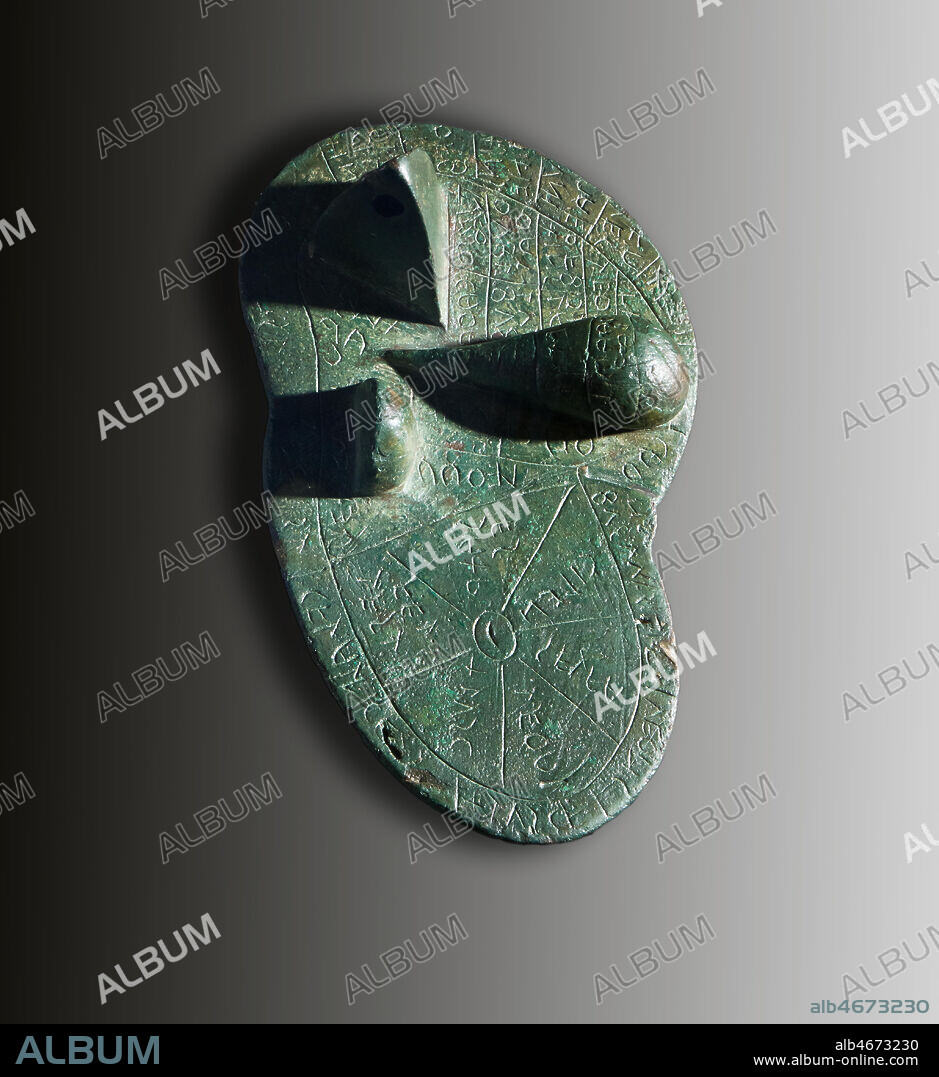alb4673230
Piacenza, Palazzo Farnese, Municipal Museums: Etruscan Liver. The Liver of Piacenza is an Etruscan artifact found in 1877, near Gossolengo, in the province of Piacenza. It is a life-sized bronze model of a sheep's liver covered in Etruscan inscriptions (TLE 719), measuring 126 mm by 76 mm by 60 mm and dated to the late 2nd century BC, i.e. a time when the Piacenza region would already have been Latin-dominated.. The liver is subdivided into sections for the purposes of performing haruspicy (hepatoscopy). The outer rim of the Piacenza liver is divided into 16 sections; since according to the testimony of Pliny and Cicero, the Etruscan divided the heavens into 16 astrological houses, it has been suggested that the liver is supposed to represent a model of the cosmos, and its parts should be identified as constellations or astrological signs.

|
Zu einem anderen Lightbox hinzufügen |
|
Zu einem anderen Lightbox hinzufügen |



Haben Sie bereits ein Konto? Anmelden
Sie haben kein Konto? Registrieren
Dieses Bild kaufen

Untertitel:
Siehe automatische Übersetzung
Piacenza, Palazzo Farnese, Municipal Museums: Etruscan Liver. The Liver of Piacenza is an Etruscan artifact found in 1877, near Gossolengo, in the province of Piacenza. It is a life-sized bronze model of a sheep's liver covered in Etruscan inscriptions (TLE 719), measuring 126 mm by 76 mm by 60 mm and dated to the late 2nd century BC, i.e. a time when the Piacenza region would already have been Latin-dominated.. The liver is subdivided into sections for the purposes of performing haruspicy (hepatoscopy). The outer rim of the Piacenza liver is divided into 16 sections; since according to the testimony of Pliny and Cicero, the Etruscan divided the heavens into 16 astrological houses, it has been suggested that the liver is supposed to represent a model of the cosmos, and its parts should be identified as constellations or astrological signs.
Bildnachweis:
Album / Ghigo Roli
Freigaben (Releases):
Model: Nein - Eigentum: Nein
Rechtefragen?
Rechtefragen?
Bildgröße:
4096 x 4467 px | 52.3 MB
Druckgröße:
34.7 x 37.8 cm | 13.7 x 14.9 in (300 dpi)
Schlüsselwörter:
BRONZE • GESCHICHTE • ITALIEN • KUNST • LAMM • LEBER • MAGIE • MUSEEN • MUSEUM • OMEN • ORAKEL • PIACENZA (PC) • PROPHEZEIUNG • SCHAF • SCHAFHERDE • TIER: LAMM • TIER: SCHAF • WAHRSAGEREI • WEISSAGUNG • ZAUBEREI • ZAUBERER • ZEITGESCHICHTE • ZUKUNFT • ZUKÜNFTIG
 Pinterest
Pinterest Twitter
Twitter Facebook
Facebook Link kopieren
Link kopieren Email
Email
